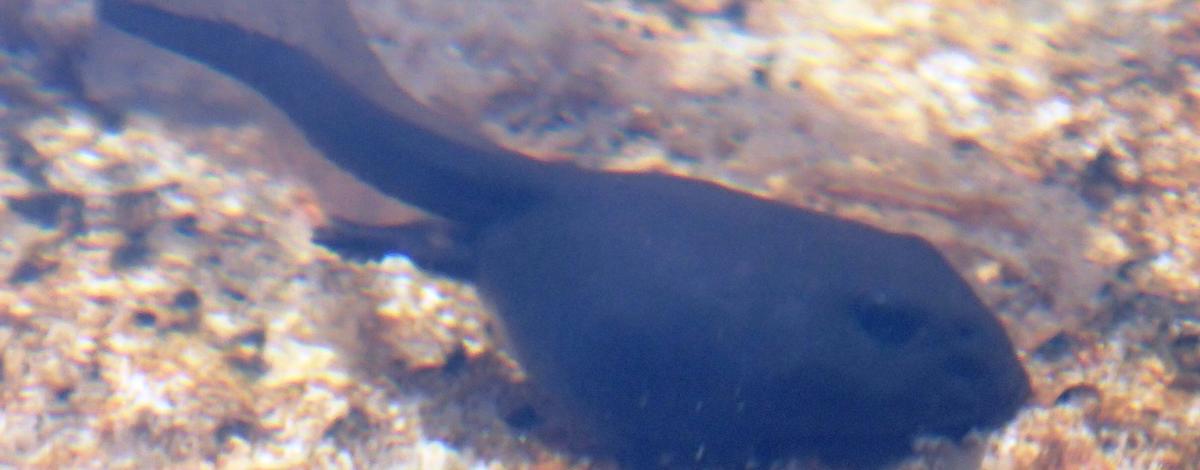During the summers of 2013 and 2014 we conducted pond breeding amphibian surveys in 783 of our 5x5 km survey cells. Unfortunately, ponds turned out to be harder to find than we expected in rainy north Idaho and only 424 of the sites we visited hoping to do a pond survey actually turned out to be ponds.
It takes 4-6 years for western toads to mature from tadpoles to adults.
We found western toads (Anaxyrus boreas), one of our target species and a Species of Greatest Conservation Need in Washington, at 25 (6%) of the 424 ponds we surveyed. We only found evidence of breeding toads at about half of those 25 sites. Knowing the location of toad breeding ponds is important information for conservation of this species.
Wildlife Diversity Technicians Andy Gygli and Amy List dipnet for amphbians at a Washington western toad breeding pond.
We did not just survey for amphibians at our study sites. We collected data on a wide variety of species during our surveys ranging from carnivorous sundew plants to other herptiles like garter snakes. We are collecting micro-climate data at selected wetlands including air temperature, relative humidity, and water temperature data. These data will help us assess which of our pond breeding amphibians have micro-climate requirements that may make them vulnerable to climate change.


Water temperature data loggers not only allow us to compare temperatures at ponds where different amphibians breed but allow us to estimate freeze and thaw dates for ponds. It is important to collect this baseline information now before the full affects of climate change occur.

We detected western toads in 25 of our survey cells.

